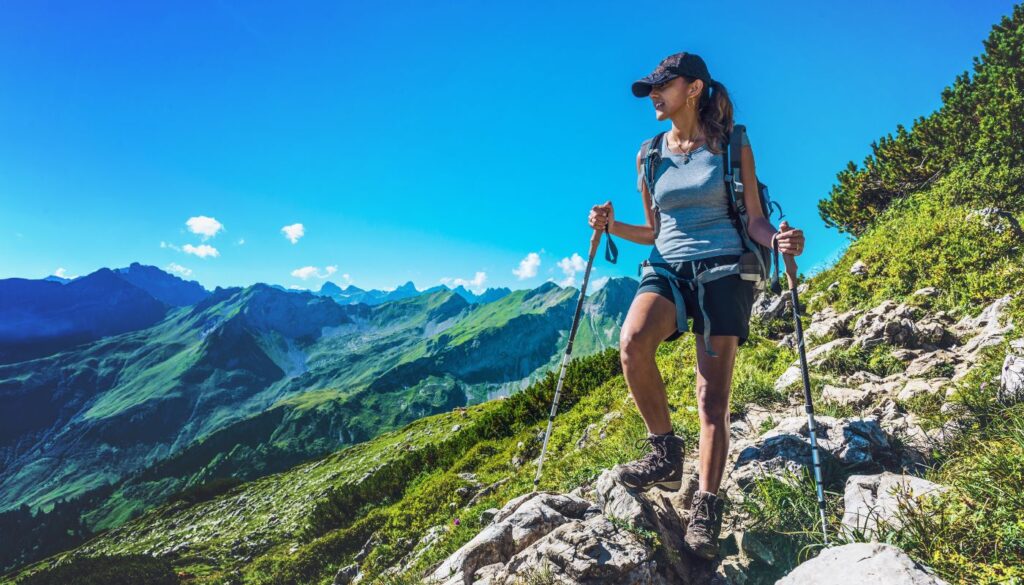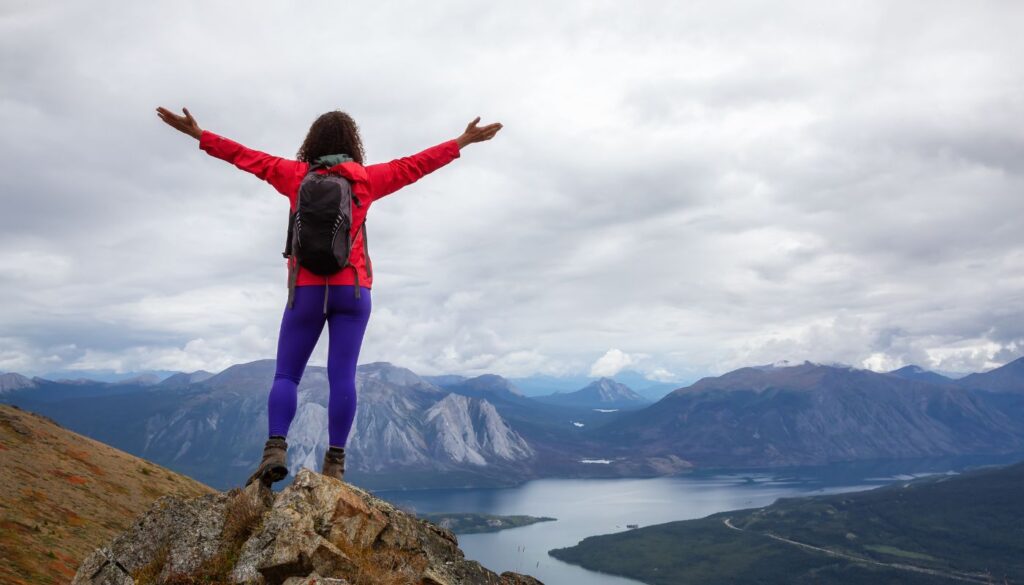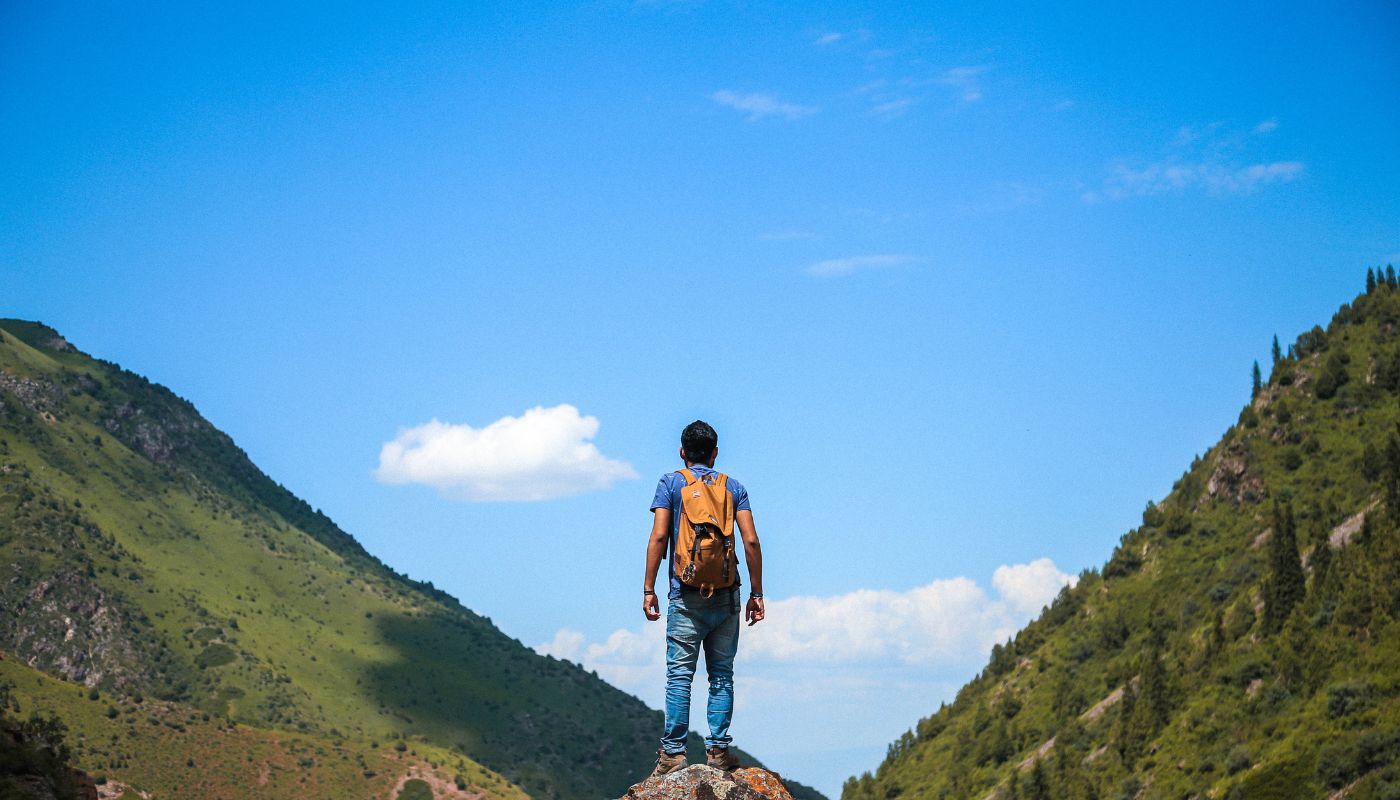Embarking on outdoor adventures fills the soul with an unparalleled sense of freedom and accomplishment. But when it comes to choosing your path, do you know the difference between hiking and trekking? Each journey through nature holds its unique charm and set of challenges. Whether you’re lacing up your boots for the first time or a seasoned explorer, understanding these distinctions can transform your experience. Dive into the essence of these adventures and find out which path calls to you.
Short Description
At first glance, hiking and trekking may seem similar, both offering outdoor enthusiasts the chance to explore nature’s beauty. However, key differences set them apart, making each adventure unique. Hiking generally refers to day-long walks on well-marked trails, often within a single day’s journey. It’s an accessible activity that requires minimal equipment, making it a popular choice for casual nature lovers and families looking for an outdoor escape.
Trekking, on the other hand, takes the adventure a step further. It involves multi-day journeys through more challenging terrains, often in remote areas. Trekkers must be prepared for varying weather conditions and potentially rugged landscapes. Unlike hiking, trekking demands a higher level of physical fitness and preparation, including camping gear, food supplies, and sometimes even navigational skills. This activity attracts those seeking a deeper connection with nature and a more immersive outdoor experience.
Both activities offer profound rewards, from the physical exercise to the mental rejuvenation and the unique sense of accomplishment that comes from exploring the great outdoors. Whether you choose the leisurely path of a day hike or the demanding adventure of a trek, you’re guaranteed to find beauty and challenge in the heart of nature.
| Feature | Hiking | Trekking |
|---|---|---|
| Duration | Single-day | Multi-day |
| Terrain | Well-marked trails | Varied, often rugged |
| Preparation | Minimal | Extensive |
| Physical Demand | Moderate | High |
Further Insights into Hiking and Trekking

Exploring the differences between hiking and trekking further, it’s clear that each activity caters to different desires and levels of adventure. While hiking allows for spontaneous and easily accessible outdoor experiences, trekking requires thorough planning and a commitment to overcoming challenges. Regardless of the path chosen, the rewards of connecting with nature and pushing personal boundaries are universal.
Choosing Your Path: Hiking vs. Trekking
Deciding whether to hike or trek depends on your personal fitness, desired level of adventure, and the time you have available. If you’re new to outdoor activities, starting with hiking might be the best way to acclimate to the demands of the outdoors. For those seeking a more intense experience and who are prepared for the physical and logistical demands, trekking offers an unforgettable adventure. In the end, both paths provide a gateway to the wonders of the natural world, each with its own lessons and rewards.
Difference Between Hiking and Trekking: Unveiling the Adventure
When it comes to outdoor activities, many people use the terms hiking and trekking interchangeably. However, these two activities have distinct characteristics that set them apart. Understanding these differences not only helps in planning your next adventure more effectively but also prepares you for the challenge each activity presents. The core distinction lies in the duration, terrain, and the intensity of the journey.
Hiking is generally understood as a long, vigorous walk, usually on trails or footpaths in the countryside. Hiking trips can last for just a few hours to a day. It’s an accessible activity that doesn’t require much preparation or specialized equipment beyond sturdy walking shoes and perhaps a daypack for carrying water, snacks, and a few essentials. The main goal of hiking is to enjoy the natural surroundings, which makes it a leisurely, albeit physically active, pursuit. The terrains on a hike are often well-marked and do not involve significant altitude changes, making it suitable for a wide range of physical fitness levels.
Trekking, on the other hand, is a more challenging endeavor. It involves multi-day walks that take you through varying terrains, often in remote areas. Trekking requires a greater degree of preparation, including necessary equipment for overnight camping, food supplies, and sometimes even guide services for navigation. Unlike hiking, trekking exposes you to a wider variety of environments, from dense forests to high mountain passes, and often involves significant changes in altitude. The physical demands and the need for self-sufficiency on a trek make it more suited to those seeking an adventurous experience rather than a casual day out.
Key Elements to Consider When Planning Your Adventure
Whether you decide to go hiking or trekking, there are several key factors to consider. The length of the journey, the difficulty of the terrain, and the level of preparation required are crucial in determining which activity best suits your adventure needs. Additionally, understanding the environmental impact and practicing responsible outdoor ethics will ensure that these natural spaces can be enjoyed by future generations.
Choosing the Right Gear for Your Journey
| Aspect | Hiking | Trekking |
|---|---|---|
| Duration | Few hours to a day | Multiple days |
| Preparation | Minimal | Extensive |
| Equipment | Basic (Walking shoes, daypack) | Specialized (Tent, sleeping bag, cooking system) |
| Environment | Well-marked trails | Varying terrains, often remote |
In conclusion, while both hiking and trekking offer a way to connect with nature and challenge one’s physical limits, they cater to different types of adventurers. Hiking is more accessible and less demanding, making it ideal for those looking for a day trip immersed in nature. Trekking, with its requirement for greater preparation and resilience, appeals to those seeking a deeper sense of adventure and exploration. Regardless of your choice, both activities provide unforgettable experiences and a profound appreciation for the natural world.
Defining Hiking and Trekking

The terms hiking and trekking are often used interchangeably, but they signify distinctly different activities for outdoor enthusiasts. Understanding the nuances between them can help adventurers choose the right experience to match their desires and capabilities. At its core, hiking refers to walking in natural environments on pre-defined paths or trails for a single day. It is an accessible activity that does not require specialized equipment beyond a pair of sturdy shoes and perhaps a daypack for carrying essentials like water and snacks.
Trekking, on the other hand, is an extended journey on foot, which can span several days and often involves camping or staying in hostels along the route. It is a more rigorous and immersive experience that takes adventurers through varying terrains, which can include mountains, forests, and deserts. Trekking requires a higher level of preparation and equipment, such as a reliable tent, sleeping bag, and a backpack capable of carrying all necessities for the duration of the journey. The essence of trekking lies in its ability to connect individuals deeply with nature and often with themselves, offering a profound sense of accomplishment upon completion.
Key Differences and Similarities
| Aspect | Hiking | Trekking |
|---|---|---|
| Duration | Typically single day | Multiple days |
| Equipment | Minimal: Good shoes, daypack | Extensive: Backpack, tent, sleeping bag, etc. |
| Terrain | Pre-defined paths or trails | Varying, often rugged and remote |
| Purpose | Enjoyment, exercise | Adventure, immersion in nature |
| Preparation | Basic physical readiness | Comprehensive planning and fitness |
While both activities share the fundamental joy of walking amidst nature, the scale and depth of preparation and engagement distinguish trekking from hiking. Hiking is more about leisure and enjoying the outdoors without the commitment of an extended period. Trekking is for those seeking a deeper connection with the natural world, a challenge to their physical and mental endurance. Regardless of the choice between hiking or trekking, both offer invaluable experiences that promote health, well-being, and an appreciation for the beauty of our planet.
As you venture into the wilderness, whether on a light trail or a demanding trek, the journey is bound to be enriching. Both activities provide a platform to unwind, reflect, and explore the untouched corners of the earth. Whether you choose the simplicity of a hike or the complexity of a trek, the adventure awaits with open paths and undiscovered territories to be explored.
Duration and Distance
The distinctions between hiking and trekking are often nuanced but significant, especially when considering the factors of duration and distance. Hiking generally refers to long, vigorous walks on trails or in the wilderness, typically lasting for a few hours to a full day. The essence of hiking is to enjoy the natural surroundings for a day or less, without the intention of an overnight stay. This activity is accessible to a wide range of people and does not require extensive preparation or specialized equipment beyond basic outdoor gear.
Trekking, on the other hand, is an activity that extends over multiple days and involves journeying across various terrains, often in remote locations. It is marked by longer distances that require a significant commitment in terms of time and physical endurance. Trekkers usually carry backpacks equipped with essentials for overnight stays, such as tents or sleeping bags, food supplies, and sometimes even cooking equipment. The purpose of trekking is to deeply immerse oneself in the environment, which often leads to exploring untouched or off-the-beaten-path destinations. Unlike hiking, trekking demands thorough preparation, including physical conditioning, route planning, and possibly the need to acclimate to different altitudes.
The duration and distance of the journey significantly influence the choice between hiking and trekking. Hiking is ideal for those looking to enjoy nature without the commitment of a long-duration journey. It’s perfect for day trips where the primary goal is to relax, exercise, or enjoy leisure time outdoors. Trekking suits those who seek adventure and challenge, as it involves longer distances, more complex planning, and a greater degree of self-sufficiency. Whether you choose to hike or trek depends on your personal preferences, physical condition, and desire for adventure.
- Understand your physical limits and choose an activity that matches your fitness level.
- Plan ahead, especially for treks, to ensure you have all necessary supplies and information.
- Consider the time you have available. Hiking can be done in a day, whereas trekking requires multiple days or weeks.
- Research the area you intend to explore to understand the terrain, weather conditions, and any potential risks.
- Respect the environment by practicing leave-no-trace principles, ensuring that the natural beauty is preserved for others to enjoy.
Terrain and Difficulty Levels
Understanding the differences between hiking and trekking involves delving into the terrain and difficulty levels typically encountered in these adventures. Hiking primarily refers to long walks in natural environments on pre-marked paths or trails. It is considered accessible for a wide range of people due to its generally moderate difficulty level. Hiking trails are designed to bring you closer to nature without requiring specialized equipment or extensive preparation. These paths can range from flat and smooth surfaces to slightly rugged, hilly terrains, accommodating both beginners and experienced hikers.
Trekking, on the other hand, is often characterized by its challenging nature, involving multi-day journeys through varied terrains that are usually more remote and less developed than hiking trails. Trekkers often face steep ascents and descents, rugged paths, and might even need to navigate through areas where paths are not clearly marked. This type of adventure demands a higher level of physical fitness, preparation, and sometimes specialized gear. The terrain in trekking can include high mountain passes, dense forests, and desert expanses, offering a richer but more demanding experience. Trekking provides an opportunity to immerse oneself in the wilderness and often leads to interactions with different cultures and communities, especially in remote areas.
Key Factors Influencing Terrain and Difficulty in Hiking and Trekking
- Pre-marked paths vs. unmarked trails: Hiking usually takes place on defined paths, making navigation easier, whereas trekking may involve navigating through unmarked or less defined trails.
- Altitude and elevation changes: Trekking often involves higher altitudes and more significant elevation changes, contributing to the physical challenge.
- Type of terrain: Hikers might encounter well-maintained paths, while trekkers face rugged, and sometimes, uncharted terrains.
- Duration of the journey: Hiking trips can last a few hours to a day, whereas trekking expeditions span several days, requiring overnight stays in camps or lodges.
- Required equipment: While hiking can often be done with minimal gear, trekking requires more specialized equipment for navigation, camping, and sometimes climbing.
Equipment and Preparation
Understanding the difference between hiking and trekking starts with recognizing the distinct requirements for each activity, especially in terms of equipment and preparation. Hiking, often considered the lighter of the two, usually requires less specialized gear. Essentials often include a sturdy pair of hiking boots, a backpack with water and snacks, and depending on the length and location, possibly a map or GPS device. Hiking is accessible to a wide range of fitness levels and doesn’t typically require extensive planning beyond checking the weather and trail conditions.
Trekking, on the other hand, demands more rigorous preparation and a greater investment in gear. Given that trekking expeditions can last multiple days and lead adventurers into more remote, rugged terrains, the equipment list extends to include a high-quality backpack, a sleeping bag suitable for the climate, a tent, and possibly a portable stove. Additionally, trekkers must be prepared with appropriate clothing to face varying weather conditions, from rain to potentially extreme temperatures. The preparation for a trekking excursion goes beyond physical items, encompassing physical conditioning, route planning, and often, obtaining permits or professional guidance.
| Item | Hiking | Trekking |
|---|---|---|
| Footwear | Hiking boots/shoes | Sturdy, supportive trekking boots |
| Backpack | Daypack | Large backpack with frame |
| Clothing | Weather-appropriate, breathable | Layered, versatile for various climates |
| Navigation | Map, GPS (optional) | Map, GPS (essential), Compass |
| Shelter | Not necessary (for day hikes) | Tent, sleeping bag, mat |
Whether embarking on a light hike or a challenging trek, the right preparation can make all the difference. Investing time in understanding the specific requirements of your chosen activity ensures not only safety but also enhances the overall experience. Tailoring your gear and preparation to the nature of the adventure allows you to immerse fully in the beauty of the outdoors, with the confidence that you are well-equipped for what lies ahead.
Health Benefits and Challenges
Embarking on outdoor adventures such as hiking and trekking offers a myriad of health benefits, enhancing both physical and mental well-being. The act of walking through nature, navigating terrain, and reaching new heights not only boosts cardiovascular health but also improves muscle tone, endurance, and flexibility. The natural landscapes provide a serene backdrop that aids in reducing stress, enhancing mood, and improving mental clarity. However, these activities come with their own set of challenges. Preparing for unpredictable weather, navigating difficult terrains, and ensuring adequate hydration and nutrition are critical components that adventurers must consider to safeguard their health and safety.
Moreover, the social aspect of these activities cannot be overlooked. Joining hiking or trekking groups fosters a sense of community and belonging, offering opportunities for social interaction that are beneficial for mental health. Yet, the physical demands of trekking, especially on longer, more arduous journeys, pose a significant challenge. It requires a higher degree of physical fitness and preparation, as well as mental resilience to overcome obstacles and complete the journey. Altitude sickness is another concern for trekkers venturing into high elevations, necessitating proper acclimatization and preparation.
The balance between reaping the health benefits while mitigating the challenges is crucial. It involves thorough planning, training, and understanding of one’s own physical limitations and environmental factors. Despite these challenges, the rewards of conquering a hike or trek, the panoramic views, and the sense of accomplishment are unparalleled. These activities not only strengthen the body but also enrich the soul, making them a worthy pursuit for anyone looking to explore the great outdoors.
Further Insights into Health Benefits and Challenges
Delving deeper into the health benefits, it’s evident that regular engagement in hiking or trekking can lead to long-term health improvements, including reduced risk of heart disease, hypertension, diabetes, and obesity. The challenges, while daunting, teach valuable skills such as problem-solving, resilience, and self-reliance. Navigating through difficult terrains enhances spatial awareness and cognitive functions. Therefore, the journey of hiking or trekking is not just a physical endeavor but a holistic experience that nurtures the mind, body, and spirit.
Another Perspective on Health Benefits and Challenges
From another viewpoint, the environmental interaction during hiking and trekking promotes a deeper connection with nature, fostering an appreciation for conservation and environmental sustainability. This connection can lead to a more mindful lifestyle, encouraging practices that protect and preserve natural habitats. The challenges of these activities also instill a sense of responsibility and preparedness, emphasizing the importance of respecting nature’s limits and understanding the impact of human activities on the environment.
| Aspect | Benefits | Challenges |
|---|---|---|
| Physical Health | Improved cardiovascular health, muscle tone, endurance | Physical demands, risk of injury |
| Mental Well-being | Stress reduction, enhanced mood | Mental resilience for long treks |
| Social Interaction | Community building, sense of belonging | Navigating group dynamics |
| Environmental Connection | Appreciation for nature, mindfulness | Environmental challenges, sustainability |
| Preparation & Safety | Skills development, self-reliance | Preparation for unpredictable conditions |
In conclusion, the journey into hiking and trekking transcends the physical realm, offering profound health benefits and life lessons. It demands respect for nature, preparation, and an understanding of one’s limits. Despite the challenges, the rewards of connecting with the natural world, improving one’s health, and fostering community are immeasurable. Therefore, embracing these adventurous activities can lead to a richer, more fulfilling life experience.
